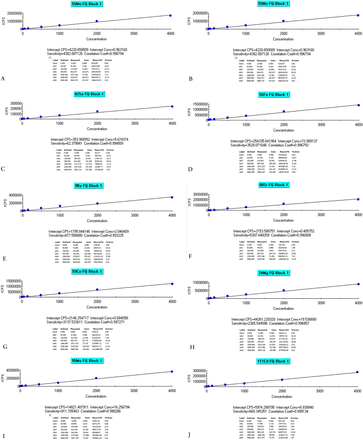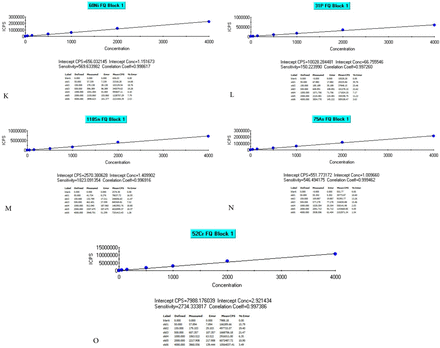Abstract
Objectives: To investigate potential risk factors for Parkinson’s disease (PD) in elderly individuals rural living in Turkey.
Methods: In total, 72 consecutive elderly Parkinson disease patients referred to the Neurology Clinic, Iğdir State Hospital, Iğdır, Turkey were included in the study. A structured questionnaire comprising questions on history of pastoral living, pit water consumption, and exposure to ionizing radiation and pesticides was administered to the patients. The patients were divided into 2 groups on the basis of water consumption: well water consumption group and city network consumption group.
Results: Of 72 patients with PD, 49 (68.1%) exposed to well water while 23 (31.9%) did not exposed to well water. The average duration of well water consumption was 20 (standard deviation 6) years (p<0.01) in group 1. Nitrate, sulfate and heavy metal levels were significantly higher in well water than in city network water (p<0.05).
Conclusion: Consumption of well water containing heavy metals and nitrates in early life may contribute to the etiology of Parkinson disease in elderly individuals in Iğdır province of Turkey
Parkinson disease (PD) is a major cause of morbidity in senior individuals. The major pathophysiology of this disorder entails death of dopaminergic neurons and degeneration of neuronal projections to the basal ganglia. The etiology of the disease is multifactorial, and interactions between genetic and environmental factors play a critical role in the development of the disorder.1 Reportedly, well water consumption, farming, smoking, pesticides, rural living, diet, and coffee and alcohol consumption as well as ionizing radiation, head trauma, and infections are the potential environmental risk factors for PD.2⇓–4 Studies1,2,3,4 have reported controversial results, but for the most part, they have confirmed the association between environmental factors and PD.2 In most of the studies, smoking has been found to be negatively associated with PD.3
In rural areas, particularly among farmers, consumption of well water contaminated with nitrates, phosphates, and heavy metals that are components of chemical fertilizers and pesticides is a potentially important risk factor for informed consent was obtained from all the patients. A structured questionnaire comprising 10 questions was administered to PD patients and controls to obtain information about place of birth, residence, occupation, history of head trauma, family history of PD and essential tremor, rural living, history of well water consumption, PD.2,3 Iğdır province is a rural area in eastern Turkey where agriculture is the main source of income. PD is very common in Iğdır province, and Metsamor nuclear reactor is located at a distance of approximately 16 km from this province.4 We aimed to investigate farming, well water consumption, rural living, and pesticide exposure as potential risk factors for PD in elderly individuals of Iğdır province through a case-control study and through chemical analysis of the well water for nitrate, phosphate, and heavy metal levels.
Methods
This is prospective controlled the study. In total, 72 consecutive patients with PD confirmed by a neurologist who were referred to the Iğdir State Hospital Neurology Clinic, Iğdir, Turkey, between June 24, 2016, and October 1, 2016, were enrolled in this study. Ethics Committee approval was received from Van Yuzuncu Yıl University Clinical Applications Ethics Committee (Decision number: 21.09.2017/06). All procedures were carried out according to the ethical rules specified in the Helsinki Declaration revised at 2000. Inclusion criteria were presence of 2 or more of the following clinical properties of PD: rigidity, resting tremor, and bradykinesia; chronic progression of symptoms; and absence of autonomic, amyotrophic, pyramidal, cerebellar, and supranuclear oculomotor signs. Furthermore, only those individuals who had been living in Iğdir before the age of 30 were included. Exclusion criteria were drug-induced parkinsonian symptoms or parkinsonian symptoms due to encephalitis, brain trauma, Huntington’s or Wilson’s disease, brain tumor, multiple cerebral infarcts, normal pressure hydrocephalus, and carbon monoxide intoxication. exposure to ionizing radiation, exposure to pesticides, and cigarette smoking. All exposures were self-reported. Well water consumption was considered before the age of 30. Based on water consumption, patients were divided into 2 groups: (1) well water consumption and (2) city network water consumption.
Measurement of water analysis
Nitrate, sulfate, fluorine, chlorine, bromine, beryllium, iron, magnesium, phosphate, chromium, cadmium, manganese, cobalt, nickel, arsenic, selenium, strontium, molybdenum, tin, titanium, vanadium, silver, thallium, lithium, and heavy metal levels were measured in both well water and city network water samples. Each parameter was spectrophotometrically analyzed 6 times using ICP-MS Thermo Scientific XSERIES 2 instrument. Water samples are filtered through 0.22µ filters to remove potential suspensions. Then, samples are pulled into the ICP-MS instrument for 40 seconds. After nebulization and the elements are carried into Ar plasma for excitation. Detection of the elements are performed via mass spectrometer. Each analysis is repeated three times. The results were expressed in mg/L.
Statistical analysis
The Statistical Package for the Social Sciences package program (version 21) was used for statistical evaluations. The characteristics were presented as mean, standard deviation (SD), minimum and maximum values, and percentages. Mann–Whitney U-test was enforced to compare the groups. Chi-square test was enforced to determine the relationship between categorical variables. In addition, Z-test was used for comparison of proportions. Results with a p-value of 0.05 or less were noted significant.
Results
Of the 72 consecutive PD patients in Iğdir province included in this trial, 49 (68.1%) exposed to well water while 23 (31.9%) did not exposed to well water and 26 (36.1%) were female and 46 (63.9%) were male. The average age was 67.62±12.42 years in patients exposed to well water and 69.60±9.58 years in patients not exposed to well water. Exposure to pesticides, farming, rural residence, well water consumption, and pesticides was detected in group 1 (exposed to well water). The standard charts (image of peaks) of data belonging to control were shown in Appendix 1 to determine that the heavy metal results obtained from ICP-MS are accurate and reliable. The mean duration of well water consumption was 20±6 years (p<0.01). Levels of heavy metals and anions, which are risk factors for PD, were significantly higher in well water than in city network water (Table 2; p<0.05). Nitrate, sulfate, anion, iron, lithium, and manganese levels were significantly higher in well water than in city network water (p<0.05; Tables 2 and 3). Both cases and controls were exposed to ionizing radiation because of proximity to the Metsamor nuclear reactor, located in central Armenia next to Iğdir province. The presence of a positive family history of PD in first-degree relatives revealed that there was a tendency to PD in both groups. There was no significant difference in cigarette smoking between the 2 groups. Farming, well water consumption, exposure to pesticides, rural birth, and residence in Iğdir province were associated with PD.
Demographics of the study groups.
Comparison of heavy metal levels in well water and city network water (µg/L).
Comparison of nitrate and sulfate levels between groups (µg/L).
Discussion
There is substantial evidence indicating that PD in elderly individuals may have its origin in exposure to environmental factors such as well water, pesticides, and ionizing radiation during early life, including young adulthood.5⇓⇓⇓–9 Our study population stays in Iğdır, an agricultural region of eastern Turkey, where pesticides have been used since 1960. Interestingly, PD prevalence in Iğdir is higher than that in other regions of Turkey. Our results suggest that in Iğdır province, PD prevalence is associated with well water exposure. This study is unique in terms of evaluating the effect of differences in drinking water on long-term health outcomes in Turkey.
Heavy metal and anion levels were higher in well water than in city network water in Iğdır province. Similar to our study, several trials have shown an association between PD and exposure to heavy metals such as thallium, aluminum, bismuth, copper, iron, lead, mercury, cadmium, manganese, and zinc.10 Although many studies have examined the association between PD and well water consumption, very few studies have attempted to quantify heavy metal levels and/or specific pesticide contamination in well water.5⇓⇓⇓⇓⇓–11 Some of these studies found only small relative PD risk, probably due to the absence of heavy metals or other toxins in the consumed well water. Perhaps the wells studied were free of contamination from agricultural chemicals.12,13
In our study, we also found high sulfate and nitrate levels in well water. In rural areas, particularly among farmers, consumption of well water contaminated with nitrates, phosphates, and heavy metals as a result of chemical fertilization and esticides is an important risk factor for PD.13,14 Previous clinical observations have shown that environmental risk factors play a role in PD etiology. Several environmental toxins such as pesticides, herbicides, and nitrates often used in agriculture are risk factors for PD.14,15 To our knowledge, our study is unique in Turkey because it evaluates the association between PD and well water consumption as well as content. Similar studies should be performed in other farming areas in Turkey to further PD prevention efforts in rural areas.16
Limitation of Study
Although this study is a prospective controlled the study, it has some limitations. The small number of patients and single center are important limitations. However, according to our knowledge, this is the first study to investigate the relationship between heavy metal levels with well water consumption group and city network consumption in Turkey. In order to clarify the details of the relationship between heavy metal levels with well water consumption group and city network consumption, tehere is needed researches with more multicentre and a higher number of subjects.
In conclusion, our study is the first in Turkey to evaluate the association between PD and exposure to well water and to evaluate well water content in terms of heavy metals and nitrates. Nitrate, sulfate, iron, lithium, and manganese levels in well water were significantly higher than those in city network water. This study provides argument that consumption of well water in early life take overs an eventuale role in the etiology of PD in elderly individuals in Iğdır province.
Appendix
Appendix 1 - Standard graphic images that indicate trace element measurements as accurate and reliable. k) nickel, l) phosphorus, m) tin, n) arsenic, o) chrome.

Appendix 1 - Standard graphic images that indicate trace element measurements as accurate and reliable. a) Manganese, b) lithium, c) selenium, d) iron, e) beryllium, f) strontium, g) cobalt, h) magnesium, i) molybdenum, j) cadmium

Footnotes
Disclosure. Authors have no conflict of interests, and the work was not supported or funded by any drug company.
- Received October 24, 2019.
- Accepted December 22, 2019.
- Copyright: © Neurosciences
Neurosciences is an Open Access journal and articles published are distributed under the terms of the Creative Commons Attribution-NonCommercial License (CC BY-NC). Readers may copy, distribute, and display the work for non-commercial purposes with the proper citation of the original work.






